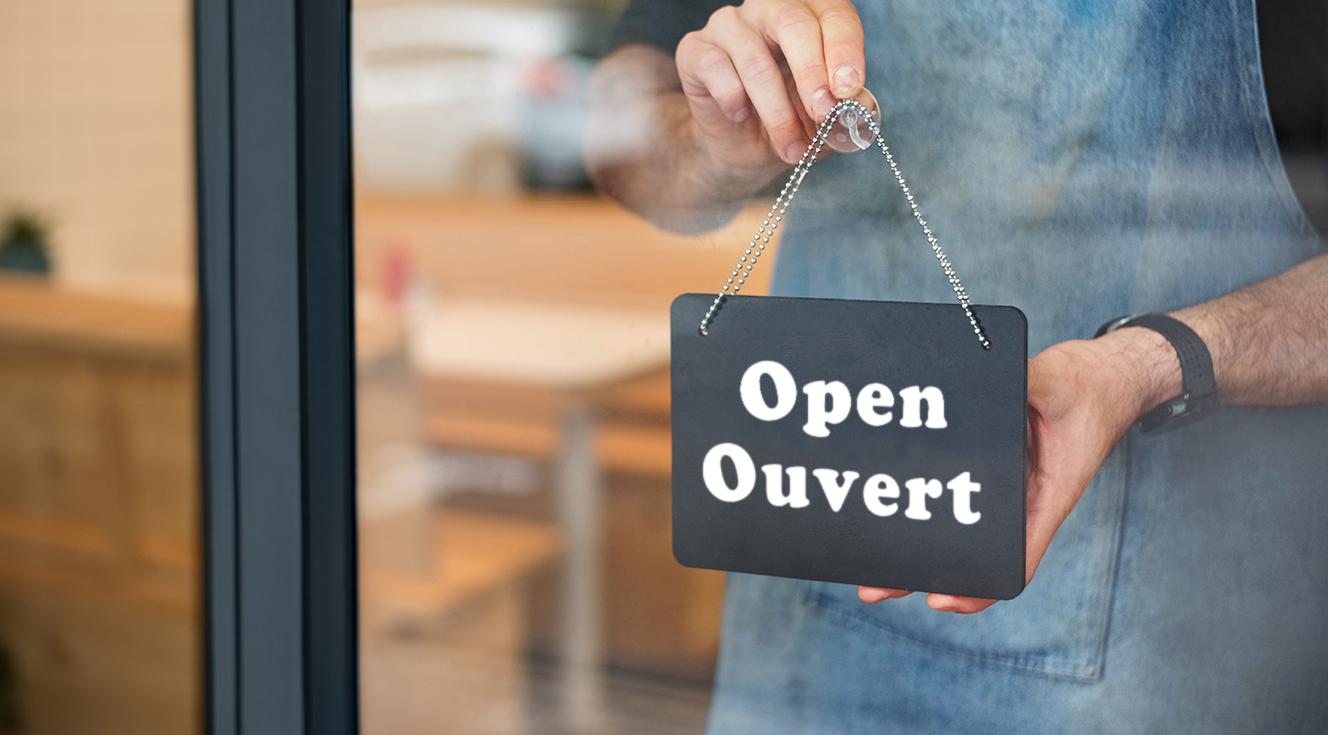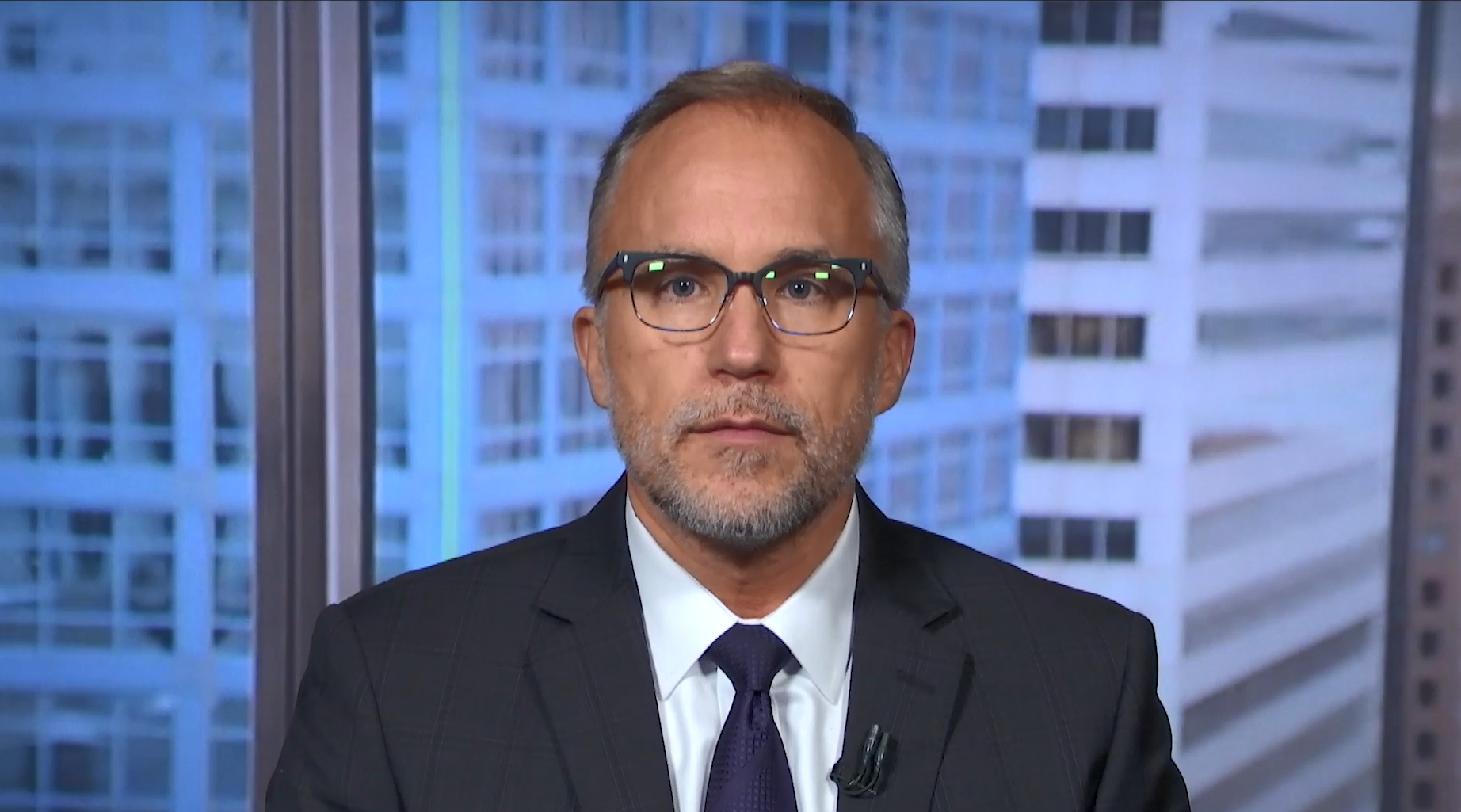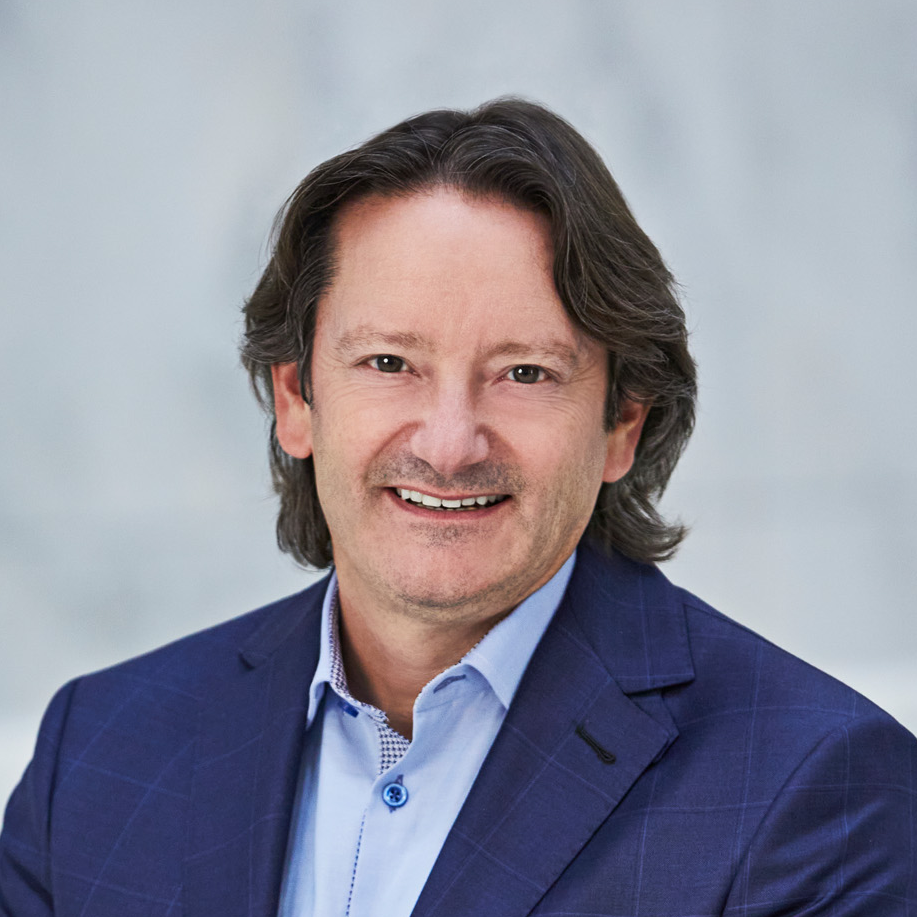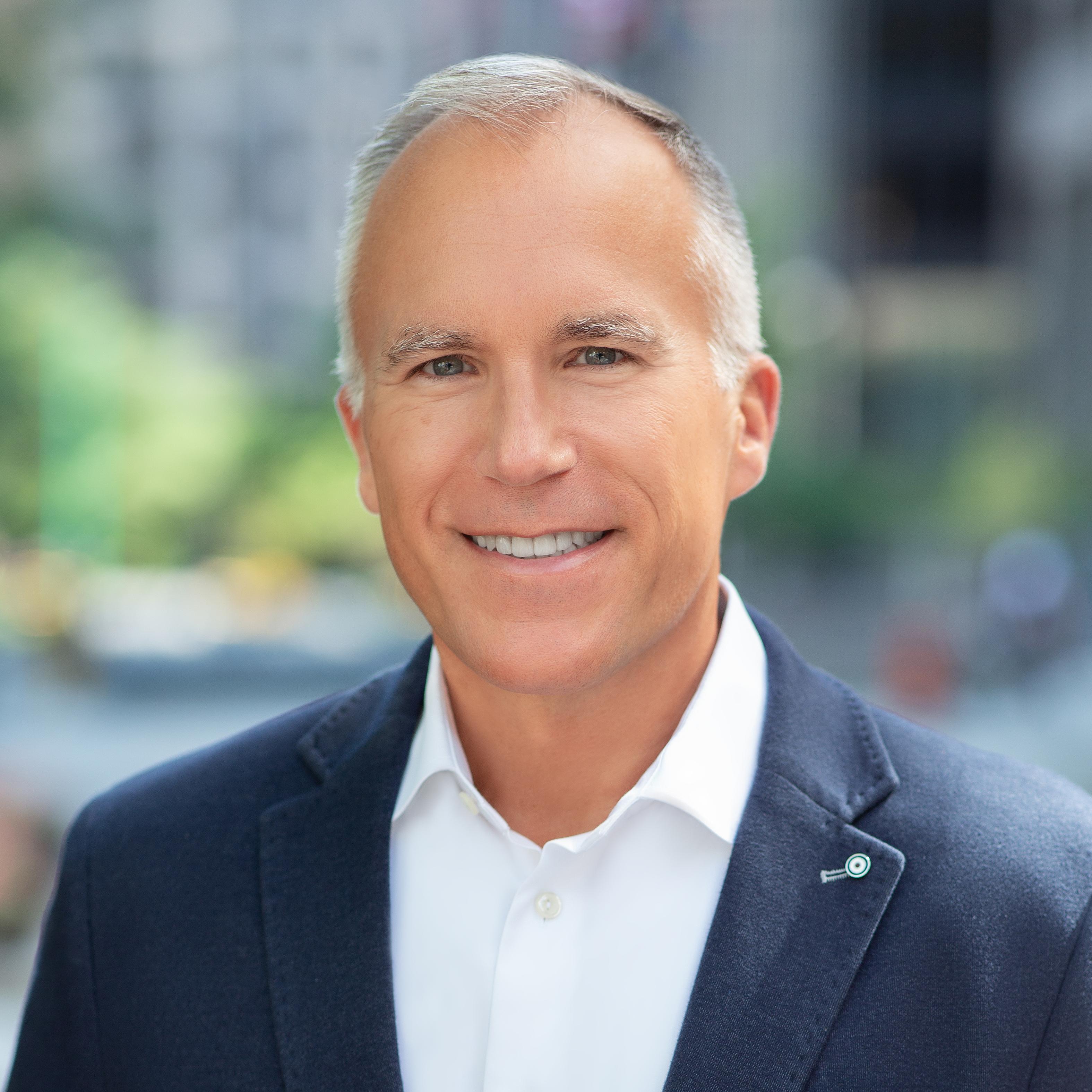
Playing the Long Game to Recovery
-
bookmark
-
print

- Keywords:
- covid-19


The war on COVID-19 is being fought on many fronts, by healthcare systems that face it every day on the front line, and by governments and businesses who are fighting to keep our economies alive today so that they can thrive again tomorrow.
BMO Capital Markets Chief Executive Officer Dan Barclay recently hosted a conversation with two key experts who have been talking to our clients throughout this crisis to discuss the road ahead, balancing a lifting of restrictions while restarting economies.
Participants include:
Dan Barclay![]() , CEO BMO Capital Markets
, CEO BMO Capital Markets
Brian Belski![]() , Chief Investment Strategist, BMO Capital Markets
, Chief Investment Strategist, BMO Capital Markets
Dr. John Whyte MD![]() , Chief Medical Officer, WebMD
, Chief Medical Officer, WebMD
Listen to the full conversation here, or read the content below that describes what is in the podcast.
“Over the last few weeks we’ve developed a new conversation around the pandemic,” Barclay said in opening the 45-minute, remote broadcast call. “We’ve come through the last three months and now we are starting to look at where we go from here.”
Opportunity lies ahead
Belski opened his commentary with a call to investors to stick to the fundamentals as they manage their portfolios through the crisis, and as global economies start to reopen.
“I think to be a high-quality investor during these times has to be one of the main attributes when you are building portfolios and strategy,” said Belski, pointing at significant opportunity on the horizon as global economic activity is restarted – in the short-, medium- and long-term. U.S. and Canadian markets will benefit especially, he said, as investors repatriate funds from emerging markets like China.
Expect new opportunity and new leadership from sectors that are related to, and enable, the notion of a mobile society and mobile worker, said Belski.
He predicted that technology and communications services will fast become the new staples of a post-pandemic world, as society changes how, what and where it buys.
“Those are trends and companies that were in place prior to COVID, that were reinforced during COVID and which we think will have longer term run life through that, whether that is a Netflix or a Google or an Amazon or Costco or Walmart.”
For precedent, he pointed at the tech crisis, when the investment world was saying it would never again buy another technology stock, and new companies emerged – companies like Amazon, Google, Facebook and Netflix – quietly growing as they went public and became the new leadership brand of stocks.
“So I think you want to focus on areas that we’d see as emerging growth and we do see that in the communications spot, the technology spot,” he said. “And I do think that once the global economy begins to reconnect, we are going to have the resources sectors, including energy and materials, play along, but that is a longer-term theme, more like 2021, 2022.”
Focus on Fundamentals
Belski said the market hit a bottom due to the impacts of COVID-19 on March 23. Since the onset of the crisis in North American markets, Canadian markets have rebounded some 32 percent, and the main U.S. markets – the S&P and the NASDAQ – are up 28 percent. Belski said those markets will benefit even more going forward as investors in emerging markets like China – which is showing some strain from supply chain issues – turn their attention to fundamental quality opportunities.
What does that mean for investors?
For Belski, it means that taking advantage of the rapid recovery will lie in worrying less about the big picture, and more about the bottom up. That equates to focusing on those companies, industries and economic sectors that will do well coming out of COVID-19 and lead the recovery into the second half and into 2021.
No Great Depression
He also pointed to the housing sectors in the United States and Canada, predicting that increased savings by households combined with low interest rates and a sector that went into hibernation with the onset of the pandemic, would fuel a sharp rebound in the second half of 2020 and into 2021.
Oil and gas, buffeted also by tensions among oil-producing countries, will likely see a massive cycle of M&A amid disparate valuations and as the sector becomes supply- rather than demand-led.
“Worry less about the macro, and, quite frankly, some of these bombastic-type analysis and forecasts for a Great Depression type era. We do not believe that is the case and nor do our economists,” said Belski.
Healthcare: Part Policy, Part Science
Dr. John Whyte, who, prior to WebMD, served as the Director of Professional Affairs and Stakeholder Engagement at the Center for Drug Evaluation and Research at the USFDA, said the path to reopening the economy must be equal parts science and policy.
Dr. Whyte sees the light at the end of the tunnel, but emphasized the importance of technology in facilitating a safe and measured reopening of countries, citing contact tracing apps and the use of Bluetooth in both China and Singapore as successful examples.
“When we think about how we return to work, how we reopen the economy, what's the new normal,” Dr. Whyte said. “We need to have a strategy in place and it's part policy, it's part science.”
The Numbers
In terms of global COVID-19 cases and deaths, Dr. Whyte shared the numbers as of May 5: there are 3.6 million cases worldwide and 256,000 deaths; the U.S. now has more than one million cases and more than 72,000 deaths; and Canada has more than 62,000 cases and more than 4,000 deaths.
While the numbers are sobering, Dr. Whyte urged everyone to remember that, originally, more than 1 million deaths were projected in the U.S. alone. As well, he pointed at enormous gains in the area of treatments and vaccines, of which there were none at all when the pandemic began. Now, there are more than 250 treatments being tested and 70 vaccines in development.
The Reality of a Vaccine
Asked by Barclay about prognostications by certain drug companies of a vaccine being ready by the fall, Dr. Whyte responded hesitantly, reluctant to share in the optimism. He explained that historical evidence shows that most successful vaccines take around a decade before they’re truly ready.
“They're taking a chance to have something in the fall,” he said. “Is it possible that they'll dot all the ‘I’s and cross all the ‘T’s, and the vaccine will be safe and effective? Possibly, but we also have to be realistic.”
Even with a vaccine ready and considered safe for use by the fall, Dr. Whyte said, it would likely only be available initially for first responders, and as production ramps up, to the general public.
A key dynamic to watch going forward, Dr. Whyte said, would be the relationship between public health and wealth, or business, which, prior to the pandemic, were completely separate. Today, he said, we can now see a fundamental relationship between the two. “Businesses have to rely upon public health experts to help advise them as to when is it safe to return to work,” when to relax social distancing and how to effectively implement distancing at restaurants and in other areas.
Looking Forward
Dr. Whyte reminded everyone that COVID-19 cases and deaths will continue to grow, even as the economy reopens, and a measured response will be needed to mitigate public reactions in order to avoid another shutdown.
“I don't think anyone's going to be prepared mentally for another lockdown,” he said. “I think what folks will do (is to) take much more of a surgical approach to address any outbreaks, and not the sledgehammer approach where we basically say everyone is locked home.”
Effective November 1, 2023, Dan Barclay will retire as Chief Executive Officer & Group Head, Capital Markets, and transition to a role as Senior Advisor to the …(..)
View Full Profile >Brian is the Chief Investment Strategist and leader of the Investment Strategy Group, provides strategic investment and portfolio management advice to both institut…(..)
View Full Profile >The war on COVID-19 is being fought on many fronts, by healthcare systems that face it every day on the front line, and by governments and businesses who are fighting to keep our economies alive today so that they can thrive again tomorrow.
BMO Capital Markets Chief Executive Officer Dan Barclay recently hosted a conversation with two key experts who have been talking to our clients throughout this crisis to discuss the road ahead, balancing a lifting of restrictions while restarting economies.
Participants include:
Dan Barclay![]() , CEO BMO Capital Markets
, CEO BMO Capital Markets
Brian Belski![]() , Chief Investment Strategist, BMO Capital Markets
, Chief Investment Strategist, BMO Capital Markets
Dr. John Whyte MD![]() , Chief Medical Officer, WebMD
, Chief Medical Officer, WebMD
Listen to the full conversation here, or read the content below that describes what is in the podcast.
“Over the last few weeks we’ve developed a new conversation around the pandemic,” Barclay said in opening the 45-minute, remote broadcast call. “We’ve come through the last three months and now we are starting to look at where we go from here.”
Opportunity lies ahead
Belski opened his commentary with a call to investors to stick to the fundamentals as they manage their portfolios through the crisis, and as global economies start to reopen.
“I think to be a high-quality investor during these times has to be one of the main attributes when you are building portfolios and strategy,” said Belski, pointing at significant opportunity on the horizon as global economic activity is restarted – in the short-, medium- and long-term. U.S. and Canadian markets will benefit especially, he said, as investors repatriate funds from emerging markets like China.
Expect new opportunity and new leadership from sectors that are related to, and enable, the notion of a mobile society and mobile worker, said Belski.
He predicted that technology and communications services will fast become the new staples of a post-pandemic world, as society changes how, what and where it buys.
“Those are trends and companies that were in place prior to COVID, that were reinforced during COVID and which we think will have longer term run life through that, whether that is a Netflix or a Google or an Amazon or Costco or Walmart.”
For precedent, he pointed at the tech crisis, when the investment world was saying it would never again buy another technology stock, and new companies emerged – companies like Amazon, Google, Facebook and Netflix – quietly growing as they went public and became the new leadership brand of stocks.
“So I think you want to focus on areas that we’d see as emerging growth and we do see that in the communications spot, the technology spot,” he said. “And I do think that once the global economy begins to reconnect, we are going to have the resources sectors, including energy and materials, play along, but that is a longer-term theme, more like 2021, 2022.”
Focus on Fundamentals
Belski said the market hit a bottom due to the impacts of COVID-19 on March 23. Since the onset of the crisis in North American markets, Canadian markets have rebounded some 32 percent, and the main U.S. markets – the S&P and the NASDAQ – are up 28 percent. Belski said those markets will benefit even more going forward as investors in emerging markets like China – which is showing some strain from supply chain issues – turn their attention to fundamental quality opportunities.
What does that mean for investors?
For Belski, it means that taking advantage of the rapid recovery will lie in worrying less about the big picture, and more about the bottom up. That equates to focusing on those companies, industries and economic sectors that will do well coming out of COVID-19 and lead the recovery into the second half and into 2021.
No Great Depression
He also pointed to the housing sectors in the United States and Canada, predicting that increased savings by households combined with low interest rates and a sector that went into hibernation with the onset of the pandemic, would fuel a sharp rebound in the second half of 2020 and into 2021.
Oil and gas, buffeted also by tensions among oil-producing countries, will likely see a massive cycle of M&A amid disparate valuations and as the sector becomes supply- rather than demand-led.
“Worry less about the macro, and, quite frankly, some of these bombastic-type analysis and forecasts for a Great Depression type era. We do not believe that is the case and nor do our economists,” said Belski.
Healthcare: Part Policy, Part Science
Dr. John Whyte, who, prior to WebMD, served as the Director of Professional Affairs and Stakeholder Engagement at the Center for Drug Evaluation and Research at the USFDA, said the path to reopening the economy must be equal parts science and policy.
Dr. Whyte sees the light at the end of the tunnel, but emphasized the importance of technology in facilitating a safe and measured reopening of countries, citing contact tracing apps and the use of Bluetooth in both China and Singapore as successful examples.
“When we think about how we return to work, how we reopen the economy, what's the new normal,” Dr. Whyte said. “We need to have a strategy in place and it's part policy, it's part science.”
The Numbers
In terms of global COVID-19 cases and deaths, Dr. Whyte shared the numbers as of May 5: there are 3.6 million cases worldwide and 256,000 deaths; the U.S. now has more than one million cases and more than 72,000 deaths; and Canada has more than 62,000 cases and more than 4,000 deaths.
While the numbers are sobering, Dr. Whyte urged everyone to remember that, originally, more than 1 million deaths were projected in the U.S. alone. As well, he pointed at enormous gains in the area of treatments and vaccines, of which there were none at all when the pandemic began. Now, there are more than 250 treatments being tested and 70 vaccines in development.
The Reality of a Vaccine
Asked by Barclay about prognostications by certain drug companies of a vaccine being ready by the fall, Dr. Whyte responded hesitantly, reluctant to share in the optimism. He explained that historical evidence shows that most successful vaccines take around a decade before they’re truly ready.
“They're taking a chance to have something in the fall,” he said. “Is it possible that they'll dot all the ‘I’s and cross all the ‘T’s, and the vaccine will be safe and effective? Possibly, but we also have to be realistic.”
Even with a vaccine ready and considered safe for use by the fall, Dr. Whyte said, it would likely only be available initially for first responders, and as production ramps up, to the general public.
A key dynamic to watch going forward, Dr. Whyte said, would be the relationship between public health and wealth, or business, which, prior to the pandemic, were completely separate. Today, he said, we can now see a fundamental relationship between the two. “Businesses have to rely upon public health experts to help advise them as to when is it safe to return to work,” when to relax social distancing and how to effectively implement distancing at restaurants and in other areas.
Looking Forward
Dr. Whyte reminded everyone that COVID-19 cases and deaths will continue to grow, even as the economy reopens, and a measured response will be needed to mitigate public reactions in order to avoid another shutdown.
“I don't think anyone's going to be prepared mentally for another lockdown,” he said. “I think what folks will do (is to) take much more of a surgical approach to address any outbreaks, and not the sledgehammer approach where we basically say everyone is locked home.”
What to Read Next.
North American Investment Strategy: 2021 Market Outlook
Brian Belski | December 16, 2020 | Economic Insights

While 2020 has been a challenging year, it’s also highlighted our resilience and determination. Those qualities were evident in the U.S. stock …
Continue Reading>More Insights
Tell us three simple things to
customize your experience.






Contact Us
Banking products are subject to approval and are provided in the United States by BMO Bank N.A. Member FDIC. BMO Commercial Bank is a trade name used in the United States by BMO Bank N.A. Member FDIC. BMO Sponsor Finance is a trade name used by BMO Financial Corp. and its affiliates.
Please note important disclosures for content produced by BMO Capital Markets. BMO Capital Markets Regulatory | BMOCMC Fixed Income Commentary Disclosure | BMOCMC FICC Macro Strategy Commentary Disclosure | Research Disclosure Statements.
BMO Capital Markets is a trade name used by BMO Financial Group for the wholesale banking businesses of Bank of Montreal, BMO Bank N.A. (member FDIC), Bank of Montreal Europe p.l.c., and Bank of Montreal (China) Co. Ltd, the institutional broker dealer business of BMO Capital Markets Corp. (Member FINRA and SIPC) and the agency broker dealer business of Clearpool Execution Services, LLC (Member FINRA and SIPC) in the U.S. , and the institutional broker dealer businesses of BMO Nesbitt Burns Inc. (Member Canadian Investment Regulatory Organization and Member Canadian Investor Protection Fund) in Canada and Asia, Bank of Montreal Europe p.l.c. (authorised and regulated by the Central Bank of Ireland) in Europe and BMO Capital Markets Limited (authorised and regulated by the Financial Conduct Authority) in the UK and Australia and carbon credit origination, sustainability advisory services and environmental solutions provided by Bank of Montreal, BMO Radicle Inc., and Carbon Farmers Australia Pty Ltd. (ACN 136 799 221 AFSL 430135) in Australia. "Nesbitt Burns" is a registered trademark of BMO Nesbitt Burns Inc, used under license. "BMO Capital Markets" is a trademark of Bank of Montreal, used under license. "BMO (M-Bar roundel symbol)" is a registered trademark of Bank of Montreal, used under license.
® Registered trademark of Bank of Montreal in the United States, Canada and elsewhere.
™ Trademark of Bank of Montreal in the United States and Canada.
The material contained in articles posted on this website is intended as a general market commentary. The opinions, estimates and projections, if any, contained in these articles are those of the authors and may differ from those of other BMO Commercial Bank employees and affiliates. BMO Commercial Bank endeavors to ensure that the contents have been compiled or derived from sources that it believes to be reliable and which it believes contain information and opinions which are accurate and complete. However, the authors and BMO Commercial Bank take no responsibility for any errors or omissions and do not guarantee their accuracy or completeness. These articles are for informational purposes only.
This information is not intended to be tax or legal advice. This information cannot be used by any taxpayer for the purpose of avoiding tax penalties that may be imposed on the taxpayer. This information is being used to support the promotion or marketing of the planning strategies discussed herein. BMO Bank N.A. and its affiliates do not provide legal or tax advice to clients. You should review your particular circumstances with your independent legal and tax advisors.
Third party web sites may have privacy and security policies different from BMO. Links to other web sites do not imply the endorsement or approval of such web sites. Please review the privacy and security policies of web sites reached through links from BMO web sites.
Notice to Customers
To help the government fight the funding of terrorism and money laundering activities, federal law (USA Patriot Act (Title III of Pub. L. 107 56 (signed into law October 26, 2001)) requires all financial organizations to obtain, verify and record information that identifies each person who opens an account. When you open an account, we will ask for your name, address, date of birth and other information that will allow us to identify you. We may also ask you to provide a copy of your driver's license or other identifying documents. For each business or entity that opens an account, we will ask for your name, address and other information that will allow us to identify the entity. We may also ask you to provide a copy of your certificate of incorporation (or similar document) or other identifying documents. The information you provide in this form may be used to perform a credit check and verify your identity by using internal sources and third-party vendors. If the requested information is not provided within 30 calendar days, the account will be subject to closure.



